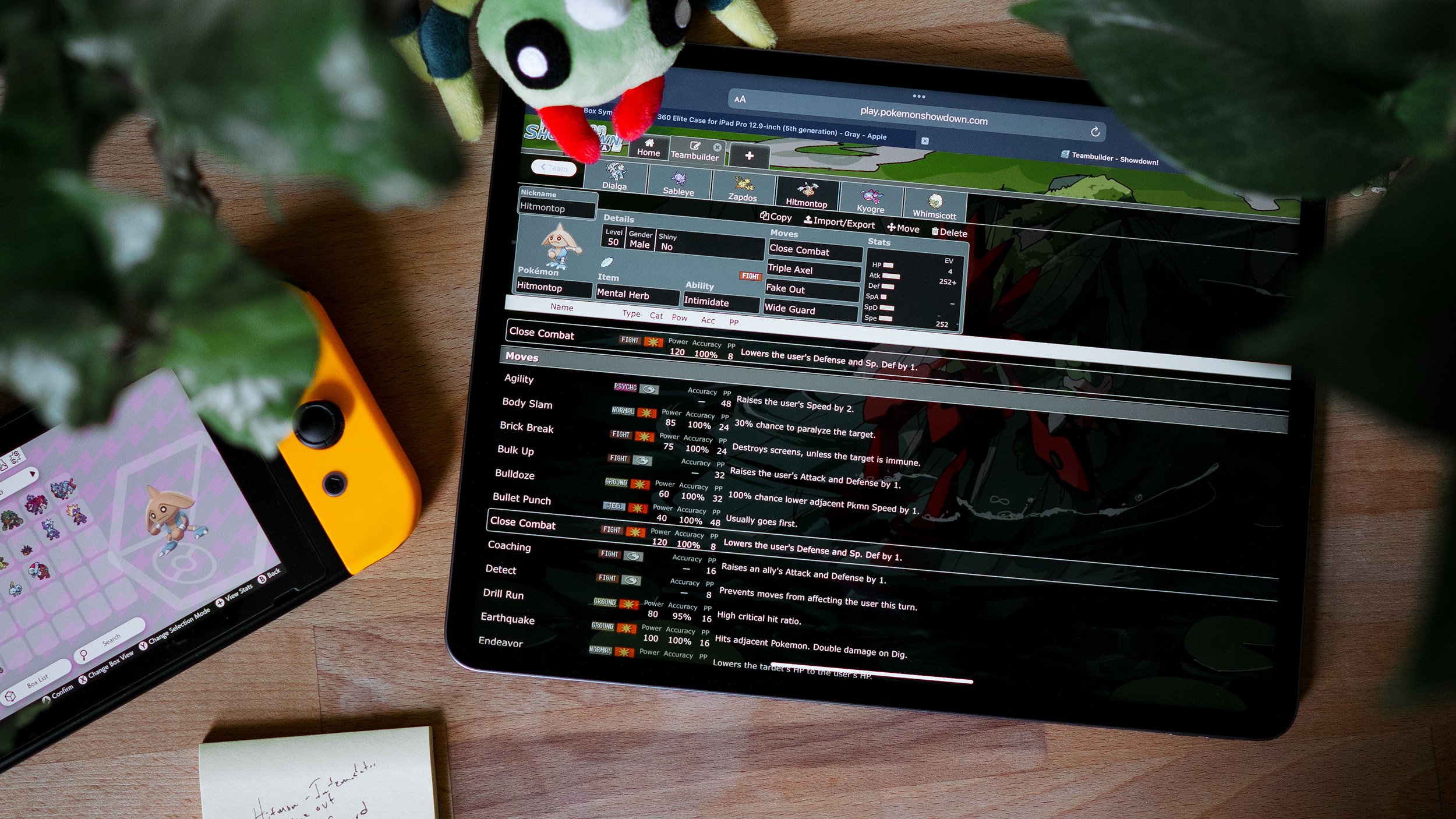
Building Up a Knowledge Base
5min 20sec read
Learn about how you can prepare yourself to fight against the most common Pokémon in a format.
Written by Aaron Zheng
Battling / Introduction
*Note: This article was written in early March 2022, some statistics may be slightly different today.
Competitive Pokémon is a tough game because you are often playing with imperfect information. As a game progresses, you learn more about your opponent’s team, but you will typically start a battle with a blank slate. This can be daunting, especially for newer players, since it feels like high-level players often read into what their opponent may do before the game even starts. How are they able to accomplish that, and how can you build up that knowledge base?
First of all, I think one of the keys to winning in Pokémon is to identify every single option your opponent has and come up with a play that beats all of those options. This is really difficult to do, and a lot of it comes from the team that you are using. For now, let’s first focus on the first step - identifying every single play your opponent can make.
To be able to identify your opponent’s possible plays, you first have to understand what their Pokémon do. This can feel overwhelming because there are so many Pokémon in the format. I recommend players who are starting out to focus on the ~20 most common Pokémon.
One great resource for this is Pikalytics, which has usage stats on every single Pokémon in the format. Pikalytics conveniently has information on both Battle Stadium & Showdown stats, and you can toggle between the two with this drop-down menu:
(note that “Series 12 VGC 2022” = Showdown, and “Stadium 12 Battle Stadium Doubles” = in-game ladder)
For Showdown, you can also toggle between rating cut-offs!
Let me walk you through an example of how you can use this resource to identify what a Pokémon may do. Generally, the most important parts I’d focus on learning are the following:
Most common attacks
Most common items
How it’s generally trained (nature/EV spread)
Take, for example, Kyogre - one of the most common Pokémon in Series 12 VGC. What can we learn from its Pikalytics page?
Attacks
I generally divide attacks into the following buckets:
Attacks that a Pokémon will very likely carry (>25% usage rate)
Attacks that a Pokémon may carry but are not very common (<25% usage rate, remaining moves listed on Pikalytics)
Attacks that a Pokémon rarely carries (moves that aren’t even on Pikalytics)
Attacks that a Pokémon will likely carry: From this, we can see that the most common attacks, by far, are Water Spout, Origin Pulse, Ice Beam, Thunder, and Protect. (44%+ usage on all). Given this, I’ll normally assume that opposing Kyogres have all of these attacks until I see otherwise.
Attacks that a Pokémon may carry but are not very common: If you scroll down to the rest of the moves, you’ll also see that occasionally, moves like Scald, Blizzard, Calm Mind, Hyper Beam, and Hydro Pump are run, but at a far less frequent rate (all <10% usage). Since these moves are far less common, I won’t go out of my way to try to play around them but I’ll still keep them in mind if I’m in a scenario where the moves could give my opponent a significant advantage.
Attacks that a Pokémon rarely carries: At this point, Pikalytics doesn’t list any more attacks. Examples of rare options on Kyogre include Icy Wind, Psych Up, Rest, Thunder Wave, etc. These are moves that I will never cover for as they are so uncommon. When you face moves in this bucket, you’ll have to rely a bit more on your ability to adapt.
The 25% usage rate benchmark is relatively arbitrary, so use your best judgment. Generally, if you want to make things easier, I’d just learn the top 6 moves for each Pokémon. As you battle, also keep in mind that a Pokémon can only have four moves -- as a result, if it’s using a uncommon/rare attack, that also means it’s often giving up one of the common attacks -- you can utilize this to your advantage!
Items
Generally, there are not too many items that an individual Pokémon will frequently run, but it’s important to learn the most common ones as they often dictate how the Pokémon is used. In this example, we see that 10% of Kyogre have an Assault Vest, 34% have a Mystic Water, 15% have a Choice Scarf, and 21% have a Life Orb.
My general rule of thumb here is to cover all items with >10% usage -- that is, when I face Kyogre, I’ll immediately assume it has AV/Mystic Water/Life Orb until I can confirm the actual item. As for other items, I’ll keep them in mind but won’t go out of my way to play around them until I’ve confirmed them.
How it’s Trained
This section on Pikalytics is a little more complicated, since it gives you the breakdown for each individual EV spread/nature combination. I’d generally focus a bit more on the big picture here and look at the following:
How much speed investment are players generally putting in?
Are there any common trends among the most used spreads?
Are there different types of spreads that I should look out for (e.g. all offensive & no bulk vs. lots of bulk & no speed)
In this example, we can see that the most used Kyogre spreads all have a significant amount of speed investment (212+ EVs). As a result, I’ll generally assume that Kyogre is Timid 252 EVs when I fight against it until I can confirm that it is slower. The common trend for Kyogre here is that the top spreads all generally invest very heavily in special attack and speed. However, that doesn’t mean all Kyogres are trained like that - as you scroll down, you’ll also see some builds that are very bulky and have little speed investment. Overall, it appears that the majority of popular spreads are either very offensive/fast or very offensive/bulky
Conclusion
This guide is not exhaustive by any means - rather, it’s meant to teach you how you can absorb valuable information and have a general idea of what to expect when you face any Pokémon. The general goal is for you to see a Pokémon and be able to identify 1) what moves it will most likely carry 2) what items it may carry & 3) how it’s generally trained.
A big caveat here is that creative team-building is a valuable element of Pokémon. Sometimes, your opponent may have a surprise Pokémon, move, item, EV spread, or strategy that you just can’t expect, no matter how much you’ve practiced or studied. Part of what makes the best players stand out is their ability to adapt to an unfamiliar scenario. At the end of the day though, you want to make sure you are at least prepared for the common sets/Pokémon in the format.
Between learning from practice battles and using Pikalytics as a resource, you should be able to build up a knowledge base & understand what the most common Pokémon do and how they are trained. The better you build up this knowledge base, the more informed decisions you’ll be able to make during a battle!



